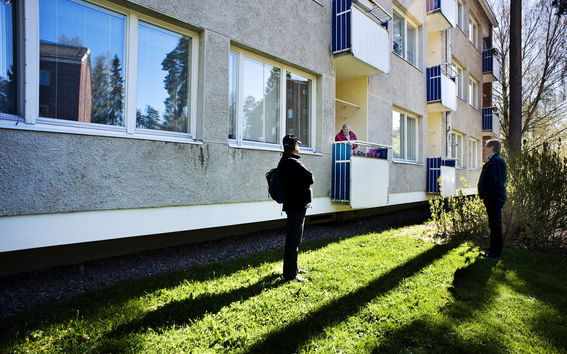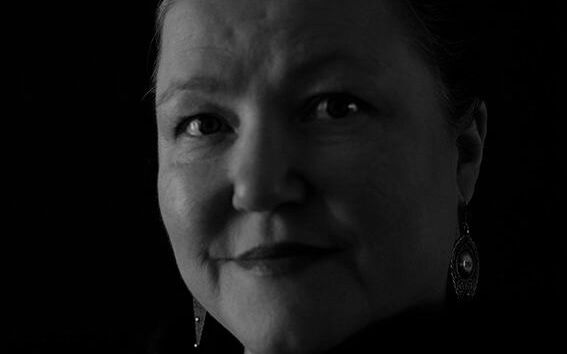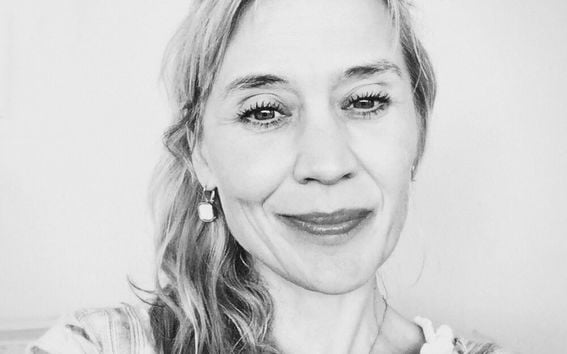Photographs of everyday life during corona times

When Finland entered a state of emergency due to the coronavirus in March 2020 and restrictions on everyday life came into force, photographer, publisher Hannamari Shakya thought something has to be done.
‘The whole idea started out of boredom. I must have something to do all the time, it’s part of my nature. In the midst of the corona anxiety, I also had to get something else to think about.’
Shakya began to operate a photographic project that would document the exceptional corona-era by means of photography. Through an open call, a record number of photographers joined the project in record time.

‘It is important to document this time, which is a turning point in our society in many ways. It compares to the recession of the 1990s, but who knows, this may be an even more significant turning point than we can still think of, Shakya ponders.
She couldn’t imagine that the project would eventually turn out as big a thing as it has become. Originally, the idea was that maybe thirty photographers would come along. But she decided to make an open call to freelancers who suddenly no longer had work--and the interest has been huge. It has not been possible to include all those who have registered later.
The project became large and therefore also laborious. The whole project started in a few days, and everything had to be done quickly because a large number of people were already involved.
‘This takes all my time, but that’s a good thing’, Shakya laughs.
A stock of 15,000 photos
Participating photographers are committed to taking one picture a day. As a rule, everyone is allowed to send a maximum of twenty images per week. The usual number of images has been about 1,500 per week, one week up to almost 1,800. Now that the documentation has been going on for eight weeks, there are altogether about 15,000 images collected.
Hannamari Shakya and other project team members, Liisa Huima, Markus Jokela and Antti Yrjönen, go through the submitted photos and pre-curate them on a weekly basis.
There is a curator invited for each week who makes his / her own choice out of about a hundred photos, or two curators out of two hundred. There was an idea to have experts from outside the field of photography as curators, but the working group eventually ended up inviting professionals in the field.
Photographers and curators are both Finnish and foreign, working in Finland and around the world. The curated ensemble is published weekly on Sundays.
Milka AlanenThis has forced me to grab the camera also in difficult times, when it was scary—as well as when I felt there was nothing to give."
‘For me, the most interesting question in the project is the idea of documenting oneself. Documentation is an easy and seemingly simple term, but on closer inspection it is a very difficult thing to implement. What is thought to be documented when it is said that everyday life is documented? What is everyday life and what kind of quality is photography when it comes to documentation?’, reflects photographer Harri Pälviranta, who curated last week's ensemble together with Jari Silomäki, both graduates of Aalto University's Department of Design Photography program. Next week's curator is New York Times photo editor Mikko Takkunen.
Among the meritorious photographers are numerous Aalto University alumni. In addition to the photographs, the documentation is made also in written by four authors, including university lecturer Hanna Weselius from Aalto's master's program in photography. The participants have received grants that make it possible to work on the project.
Also a silver lining
For freelance photographer Milka Alanen, participating in the project has been a lifeline amidst the uncertain times. The opportunity to do meaningful work has been welcome, as the number of assignments as a photographer has decreased due to the exceptional situation. At the same time, the project has brought artistic documentary photographing back to her life after a years’ break.
‘Artistic work has helped me to deal with and analyze the distressing situation, and in a way it has helped me to look my fears in the eye. It has been a good thing, but also challenging, that I’ve been committed to taking photos and sending them to the curators every week. This has forced me to grab the camera also in difficult times, when it was scary—as well as when I felt there was nothing to give.’
Alanen, who studied art education at Aalto University, has experienced the state of emergency changingly from day to day and from week to week, from relief to irritation, then from boredom to shock. Fear has also been present. She wrote in her diary: ‘Everything is cross-cut by a knife-sharp hint or fear of disease. Fear of death. It will not be forgotten.’
Alanen, who studied art education at Aalto University, has experienced the state of emergency changingly from day to day and from week to week, from relief to irritation, then from boredom to shock. Fear has also been present. She wrote in her diary: ‘Everything is cross-cut by a knife-sharp hint or fear of disease. Fear of death. It will not be forgotten.’

However, also something good has happened. Alanen feels her family has gotten much closer to each other.
‘Even if the feeling of emergency has not receded, it has also been nice to be at home, bake and watch movies together, and take walks with a teenager. These were not made together before this exceptional time.’
The state of emergency will go on for a couple more weeks, until the end of May. The project is likely to continue in some form even after that. According to Hannamari Shakya, there will also be an exhibition and a publication. They might be of help in getting back to the exceptional times in retrospect and reminiscing about what kind of life we lived while this turning point took place. ‘Where were you when the state of emergency started?’
For more information:
Read more news

DeployAI Partners Gather for Heart Beat Meeting in Helsinki
The European DeployAI project's partners gathered for the Heart Beat meeting hosted by Aalto University Executive Education in Helsinki.
Get to know us: Associate Professor Maria Sammalkorpi
Sammalkorpi received her doctorate from Helsinki University of Technology 2004. After her defence, she has worked as a researcher at the Universities of Princeton, Yale and Aalto.
Aalto computer scientists in ICML 2024
Computer scientists in ICML 2024